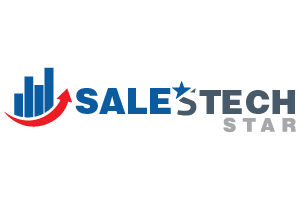Data analytics combined with artificial intelligence (AI)-powered sales technology can ramp up sales productivity through predictive selling. Data science provides a guidebook, aiding sales professionals as they choose product or service recommendations and prioritize leads. With the assistance of technology, salespeople now have more time to focus on building relationships.
The predictive selling strategies sales teams typically use now are a step up from traditional sales methods, but there’s a more transformative approach on the horizon: a move from a static sales model to a real-time action strategy that addresses constantly evolving marketplace factors. AI and machine learning make this leap forward possible by factoring in buyer behavior and data from other sources, including social media, as market conditions evolve.
This capability is emerging now, and it doesn’t merely provide salespeople with the insight they can apply as they interact with prospects — it provides specific actions they can take to improve their win rate in real time. Moreover, the recommended actions change as market conditions evolve. Replacing a static sales model with a real-time action model represents a truly significant shift in sales technology.
Currently, sales teams that use a predictive selling approach typically rely on a digitized sales playbook, i.e., technology tools that identify goals, recommend actions and provide performance metrics. Results are usually better than a sales approach that doesn’t incorporate predictive selling. But the results are not as good as they could be because programmed sales playbooks of this type are static — they don’t evolve to keep up with marketplace changes that drive buyer decision-making.
A real-time action model based on AI can produce superior selling results. Driven by AI, real-time action models allow sales team to react in an agile way when market factors change. AI components capture signals that indicate changes in buyer sentiment in response to factors such as a competitor’s campaign, viral video content, shifting marketplace perceptions, etc.
Read More: AI in Sales is on the Rise; But Golfing with Your Client Isn’t Going Away
To visualize this advantage in action, picture a security electronics firm’s sales team engaged in talks with a retail chain to sell in-store security cameras. The retailer signals interest in a moderately priced line of cameras for its 50 outlets. But as talks proceed, a competitor security firm comes out with a new product line: cameras that stream video to store manager smartphones. The retailer is intrigued by this feature, and the original firm’s deal is endangered.
Read More: Using Technology as the Basis for Building the “Path to Sales Mastery” May Be a Bit Ambitious
A sales team using a real-time predictive selling solution can get a heads-up on this marketplace shift via AI analysis that lets them know the buyer’s responsiveness has changed and that a new product release has shifted the marketplace. With real-time information about their buyer and market, the original firm’s sales team can change tactics by offering a streaming option for a competitive price. That keeps them in the running as the buyer decides.
A sales strategy that provides the sales team with specific actions they can take to close deals and changes in response to shifting marketplace conditions has the potential to utterly transform the sales function. It is a leap forward that goes beyond sales automation and lead-scoring technologies. By using the power of AI to detect data signals and create a real-time action model, sales teams gain a significant competitive edge, closing more deals more quickly.
Read More: With Automation and AI, the Human Side of Selling Is Fast Becoming a Unique Skill Set
























